At some point in your childhood, you probably have the memory of flying a kite one sunny afternoon. While to most of us a kite is a blissful childhood memory and/or toy, in some cultures, like the Chinese it holds significant meaning. Chinese kites are considered an art form with a long and rich cultural history.
Kites were believed to have originated from China and were later adopted by different cultures around the world. These ancient relics which were once simply made of wood and cloth, today in modern China, come in elaborate designs. Some resemble real animals like the members of the Chinese zodiac. Others even have LED lights attached to them for easier night flights and enjoyable light shows. The kites you know of today are nothing similar to what there is in China today or in the earlier periods.
In an attempt to better understand the significance of Chinese kites, in this post we will cover what the history of Chinese kites is, what the purpose was, and the different types that existed. As a bonus, we will also share with you how to build your Chinese kite.
What Did the Chinese Use Kites For?
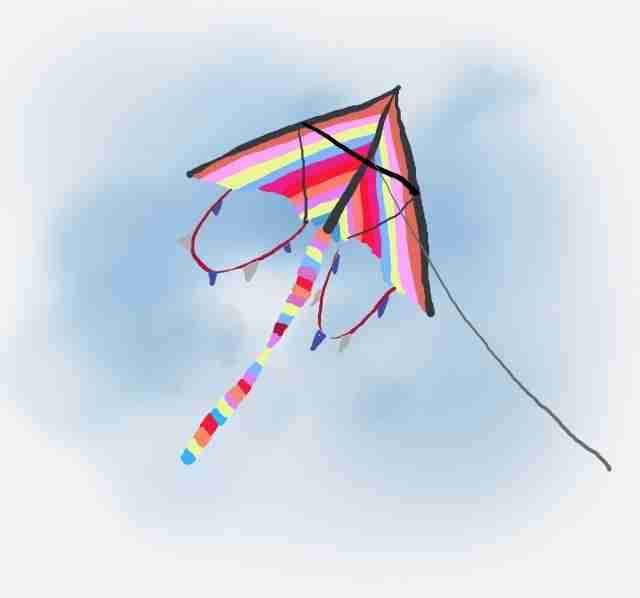
From Ancient China to today, kites play an important role in China. During the earlier periods, the kites were designed to look like a bird in natural flight and were used for military purposes. They gathered vital information that was used to plan battles. For instance, the kites measured distances which proved to be useful information especially for moving large armies across rough terrain. They were also used as messages such that when soldiers saw them flying, they would understand the meaning. By the reign of the Tang dynasty, however, most people started using it for pleasure.
Another use for kites was to calculate and record the strength and direction of the wind. According to Marco Polo’s tale of his adventures in China, there was a Weihai tradition that used the kite for this reason. According to the tradition the kite was used to determine whether a voyage will be good or not. To do this a sailor was tied to a large kite and carried off on the ship. Once the ship set sail, the kite was set off with the sailor. If the kite flew straight and high, that meant that the winds were in the sailor’s favor.
History Of Chinese Kites
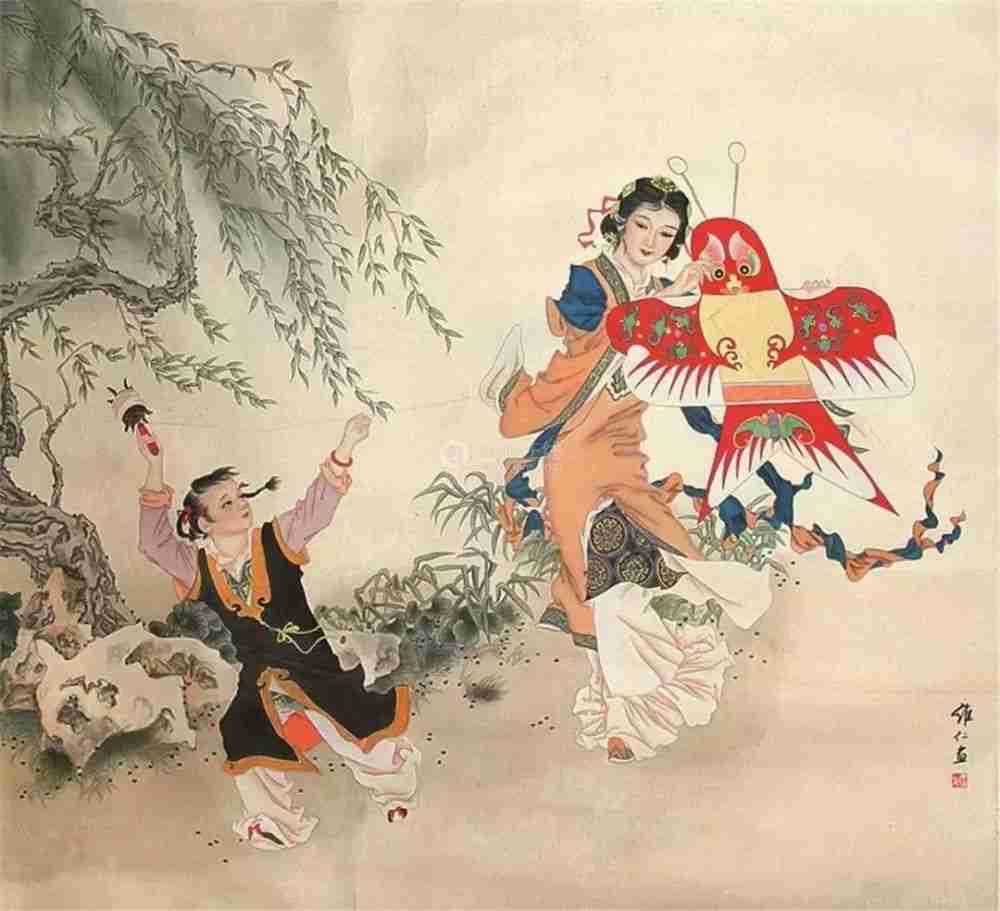
Although it is not clear who invented the first Chinese kite, they have been in existence in China for over 2000 years. Some believe that the first kite was built by a Chinese philosopher called Mo Zi in the 5th Century. Others believe that a different Chinese philosopher and inventor by the name of Liu Bang, who is said to have built a wooden, bird-like kite that could stay in the air for 2-3 days.
In the past, kites were made to be in the shape of birds because it was believed that it was the best shape for flight. They were also mostly used for military purposes and wind calculations in the past. As time passed, however, kite designs evolved to shapes of different creatures including dragons and other Chinese Zodiac animals. The making of kites also became more of an art form and flying them was seen more as recreational.
Today, Weifang, a city in Shandong, is well known for its special kite traditions. It is even named the home of the International Kite Association. It holds the Weifang International Kite Festival between 20-25 April every year, where the climax is the crowning of the annual Kite King. The city is also famous for having a museum dedicated to preserving the history of Chinese kites.
When Were Kites Invented in Ancient China?
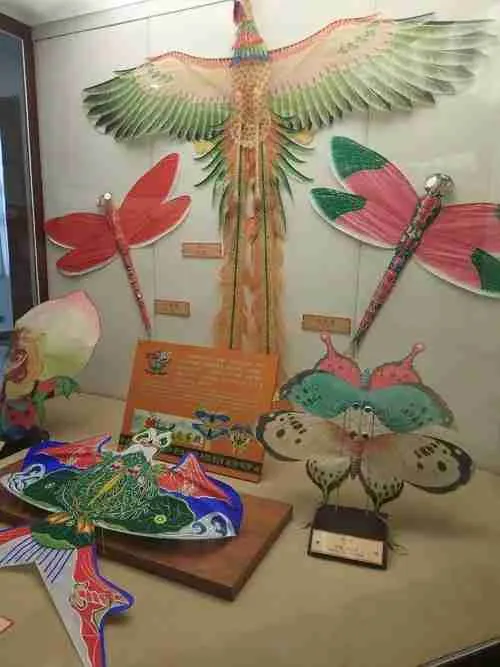
The earliest kite in Ancient China is said to have been invented during the Warring States Period when the Zhou dynasty reigned. Given that the period was characterized by war and division of China, the Kites were mainly used to collect and deliver information for military purposes. There is an account that General Han Hsin used a kite in 200BC to fly over the castle walls he was trying to seize. There are also historical accounts that show that Emperors also used the kites to signal troops from a distance during the war.
From the Han dynasty, kites were also used to call for help. When the then Chinese capital Nanking was blocked during the 2nd Sino-Japanese war, the people of Nanking flew kites as a sign of asking for help from their neighbors. The emperor of the Liang dynasty Wudi is also reported to have used a kite to call for help when he was surrounded by rebels at Taicheng Nanjing.
By the Tang dynasty, the kites that had evolved were too light to be used during the war. As such kite making became a form of art, where artists used them as a unique artistic expression. They decorated them with flowers, different colors, and calligraphy lettering. Such kites were expensive to acquire and so only noble families and those in the upper class were known to fly them for recreational purposes. By the Qing dynasty and from then on, kite flying became a popular recreation done during celebrations, especially the Chinese New Year and Spring festival, when it was believed to bring good luck. Although the silk-decorated kites were expensive, the commoners used paper kites, and so kite flying became popular across all social classes.
who invented kites in ancient china?
It is thought that the earliest use of kites was among the Chinese, approximately 2,800 years ago. The kite was said to be the invention of the famous 5th century BC Chinese philosophers Mozi and Lu Ban.
What Were Ancient Chinese Kites Made Of
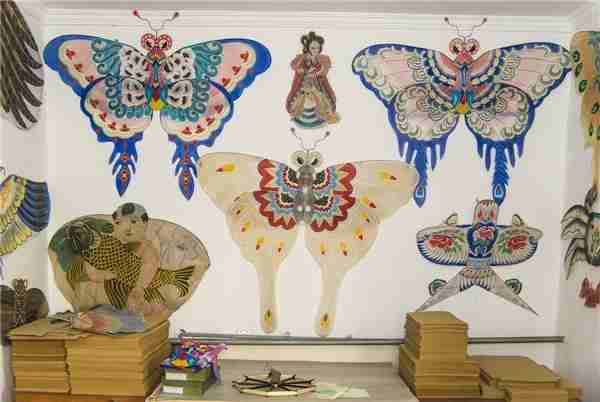
Initially, during the Warring States period, and as per the reference of Chinese philosopher Mozi’s text, the earliest kites were made of wood. Then around the Han dynasty after the invention of paper and it becomes more affordable, kites evolved. The first paper kites were reported to be from this time. By the Tang dynasty, kites had continued to evolve bringing about the first silk kites around this time.
Bamboo was commonly used as ribs to keep the paper and silk kites firm, which brought about the musical kites. This was when flying the kite, the bamboo would produce a similar sound to that of the zheng a traditional Chinese instrument. This is where the Chinese name for kite, feng zheng, stemmed from, where Feng meant ‘wind’ and Zheng meant ‘musical instrument’.
In Ancient China, the making of kites involved three main stages. The first stage was framing, which involved creating the frame of the kite using light wood like bamboo. The second stage was gluing, where the paper or silk was attached to the kite frame. Finally, the last stage involved decorating the kite with color, flowers, and calligraphy.
Over the years, the construction of kites has improved, given a better understanding of flight and the availability of better materials. Currently, there exist Chinese kites that go beyond the traditional materials to be made of nylon and plastic. Some even have LED lights and noise creators. All of these additions were done to improve the experience of flying the kites.
Types Of Chinese Kites
Given the evolution of Chinese kites over the past centuries, many variations of them exist today. These variations have been grouped into 6 main genres namely, Weifang, Taiwan, Nantong, Beijing, Tianjin, and Jiangnan kites. From these main genres there are four common forms which are as follows:
Centipede Kites
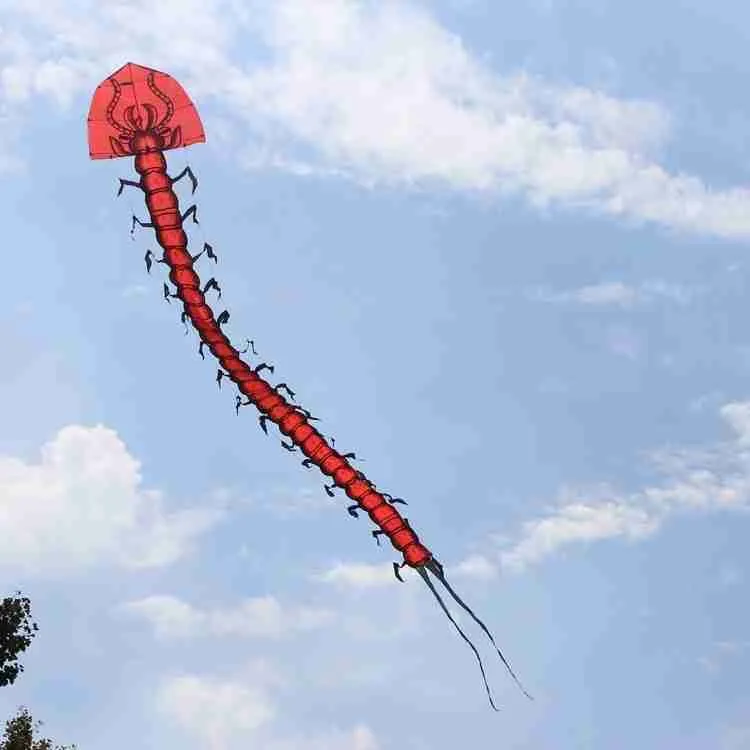
As the name suggests, this form of kite resembles the body of a centipede only it has a 3D dragon’s head. The segmented complex design of the kite and its lightweight makes it iconic and popular. Decorated with feathers and with a flat body that flies gracefully in the air, this kite is an incredible beauty even from a distance in the sky.
Hard-Winged Kites
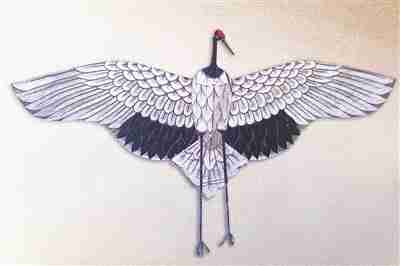
These are normally rigid kites that resemble any winged animal, be it an insect or bird. The structure often entails bamboo at the center, surrounded by other symmetrical bamboo on the sides. Silk is then glued to it to cover the structure and finally decorated with paint to give it a lovely texture. The most popular kite under this category is called the Yangjiabu kite.
Soft-Winged Kites
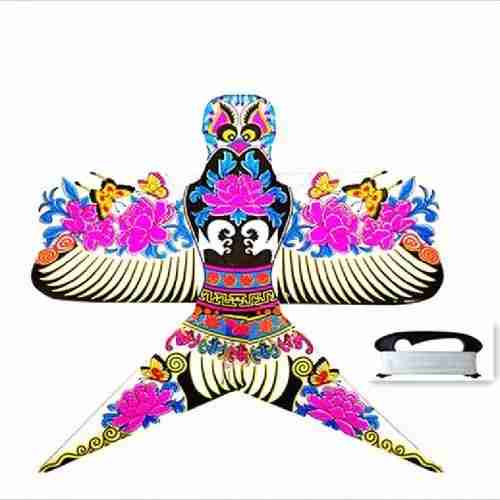
Unlike the hard wings, these types of kites have one rigid upper rim and a flexible lower rim. The designs range from insects to birds, to fish, to mythological creatures like dragons. The structure gives the kite a freer-flowing look when in the sky. The best example of such a kite is the popular giant goldfish kite.
Flat Kites

These types of kites are considered the best for beginners since they are the easiest to fly. They come with a basic flat design and can be shaped like anything. You can choose to shape it as a triangle, square, or even diamond.
How To Make Chinese Kites?
As we mentioned, kite making is an art form, whose techniques have been passed down to generations in some Chinese families. The simplest Chinese kite will normally require bamboo and paper to make. To build your own Chinese Kite, follow these simple steps:
Step 1: Get all the material
You will need good quality bamboo, either long-fiber paper or silk, scissors, plain paper, paint, glue, and tape. You will also need a crepe streamer, twine, thread, needle, and measuring tape.
Step 2: Make the body of the kite
The design of the kite can range from anything from a shape to an animal or insect. Once you have your design trace its outline on the silk or fiber paper and cut it out. You can cover the cut out with plain paper, silk, or newspaper using tape to bind the edges so it’s durable.
Step 3: Decorate the kite
To do this you can paint whatever you may want on the Kite. It could be a flower or calligraphy. After that, treat the kite with Chinawood or Tung oil. This keeps the kite stiff but lightweight.
Step 4: Frame the kite
Use the bamboo to frame the kite. Use glue to attach the frame to your kite’s body. The frame will depend on the design of your kite. If it’s a flat-type kite the frame is a simple cross or T-shaped. To ensure its firmness, wrap twine on one end of the bamboo and run it to the other end and wrap it too.
Step 5: Attach the bridle string and make the reel
The bridle string makes it easier to fly the kite while the reel determines how long of a string you need to release to fly the kite properly. First measure the bridle string with a measuring tape, ensuring it is 3 times that of the kite, and then attach. From there you can use the spool of thread as your reel by attaching it to the bridle string.
Step 6: Test the kite
Once the reel is attached the kite is done, you can choose to add a tail, although it’s optional. Now take the kite outside and test how well it flies. Choose an open area like an open field away from obstructions and power lines.
Conclusion
For the longest time kites were exclusive to China. Through trade and travel, today Chinese kites and generally kites are widespread all over the world. Marco Polo, for example, was an adventurer who visited China and introduced Chinese kites to Europe. They influenced a lot of cultures and inspired any and every development. Chinese kites are believed to be the earliest aircraft in Ancient China.